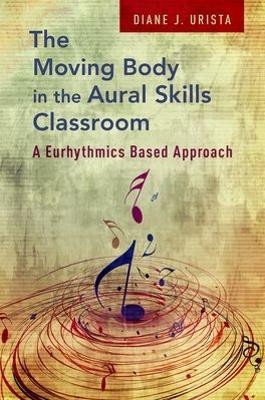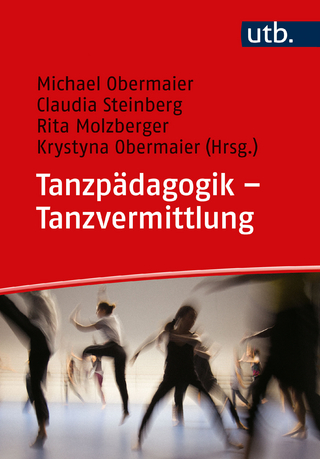
The Moving Body in the Aural Skills Classroom
Oxford University Press Inc (Verlag)
978-0-19-532612-3 (ISBN)
The Moving Body in the Aural Skills Classroom-influenced by Dalcroze-eurhythmics-is a practical guide for college-level teachers and students interested in integrating the moving body into the traditional aural skills classroom. What distinguishes this book from other texts is its central concern with movement-to-music as a tool for developing musical perception and the kinesthetic aspects humans experience as performers. Moving to music and watching others move cultivates an active, multi-sensory learning experience, in which students learn by discovery and from each other. Improvisatory and expressive elements are built into exercises to encourage a dynamic link between musical training and artistic performance. Designed for a three- to four-semester undergraduate curriculum, the book contains a wealth of exercises that teach rhythmic, melodic, harmonic and formal concepts. Exercises not only develop the ear, but also awaken the muscular and nervous system, foster mind-body connections, strengthen the powers of concentration (being in the "musical now "), develop inner-hearing, short- and long-term memory, multi-tasking skills, limb autonomy, and expressive freedom. Exercises are presented in a graded, though flexible order allowing you to select individual exercises in any sequence. Activities involve movement through space (traveling movement) as well as movement in place (stationary movement) for those teaching in small classrooms. The text can be used as a teacher's manual, a supplementary aural-skills textbook, or as a stand-alone reference in a course dedicated to eurhythmics. Movement exercises are designed to enhance and work in conjunction with musical examples presented in other texts. Many exercises also provide an effective aural/sensory tool in the music theory classroom to complement verbal explanations. The approach integrates easily into any traditional college or conservatory classroom and is compatible with the following systems: fixed do, moveable do, and scale degrees. A companion website accompanies the text featuring undergraduate students performing select exercises.
Diane Urista is on the music theory faculty at the Cleveland Institute of Music where she teaches undergraduate and graduate students. She holds a PhD in music theory from Columbia University and has studied with many Dalcroze-eurhythmics practitioners, most notably the late Robert Abramson from the Juilliard School. She has published articles and presented at numerous international and national conferences on the relationship between performance and analysis, aural skills pedagogy, and embodied musical understanding. Her background allows her to develop a discourse between the different, yet complementary, disciplines of Eurhythmics, music theory, and aural skills.
Introduction
I. Purpose
Why the Moving Body in the Aural Skills Classroom?
Healing the Mind-Body Split in College Music Training
Rhythms from the Body
What is the Kinesthetic Sense or "Sixth Sense?"
Traditional vs. Embodied Approach
Musical Affect and Expressive Performance
II. Methodology
Experience before Analysis
Spiral of Learning
Sensation before Conceptualization
Internalization and Automatisms
Improvisation: Cultivating One's "Voice"
Physiological Evidence
Reflective Stillness: Movement is Not an End in Itself
III. Getting Started (Notes to the Instructor)
Pedagogical Tips
Chapter 1: Basics
I. Preliminary Considerations
Physical Form (to the instructor)
Movement Tenets (to the instructor and students)
Overcoming Inhibitions (to the instructor)
II. Five Fundamental Exercises (to the instructor and students)
Quick Reaction
Inhibition and Excitation
Interference
Imitation and Canon
Disassociation
Chapter 2: Warm ups
Chapter 3: Rhythm
I: Basic Rhythmic Concepts and Terminology (to the instructor and students)
Time-Point vs. Gestural-Rhythm
Beat
Meter
Rhythmic Nuance
Definitions of Accents and Poetic Feet
Expressing Gestural Rhythms
Pedagogical Tips for Teaching Rhythm Exercises (to the instructor)
II: Rhythmic Subjects
1. Beat, Pulse, & Tempo
2. Meter-Simple and Compound
3. Augmentation-Rhythmic Duration and Expansion
4. Subdivision in Simple and Compound Meters
5. Rests & Pauses-The Expression of Silence
6. Dotted Rhythm
7. Syncopation
8. Gestural Rhythmic Patterns
9. Cross Rhythms and Polyrhythms
10. Changing Meters
11. Uneven Meters
12. Additive Rhythms
13. Polymeters and Cross Rhythms
Chapter 4: Pitch, Scale, and Melody
1. The Scale-to and from tonic
2. Tonal Centering, Retention, and Recall
3. Relative Pitch & Scale Degree Function
4. Scalar Fragments-The Scale's Inner workings
5. Intervals-A Contextualized Approach
6. C-to-C Scales-A Comparative Study of Scales
7. Modulation-Strategies for Singing, Hearing, and Improvising
8. Sight Singing and Inner Hearing Strategies
Chapter 5: Harmony
1. Chords-Harmonic Building Blocks from the Scale
2. Inversions-Triads and Seventh Chords
3. Embodying Harmonic Function
4. Modulation
5. Embodying/Integrating Harmonic Progressions
Chapter 6
1. Phrase
2. Forms
3. Plastique Animèe
Additional Plastique Animée
| Erscheinungsdatum | 05.10.2016 |
|---|---|
| Zusatzinfo | 100 illustrations |
| Verlagsort | New York |
| Sprache | englisch |
| Maße | 231 x 155 mm |
| Gewicht | 499 g |
| Themenwelt | Kunst / Musik / Theater ► Musik |
| Sachbuch/Ratgeber ► Sport ► Tanzen / Tanzsport | |
| Sozialwissenschaften ► Pädagogik | |
| ISBN-10 | 0-19-532612-1 / 0195326121 |
| ISBN-13 | 978-0-19-532612-3 / 9780195326123 |
| Zustand | Neuware |
| Haben Sie eine Frage zum Produkt? |
aus dem Bereich


